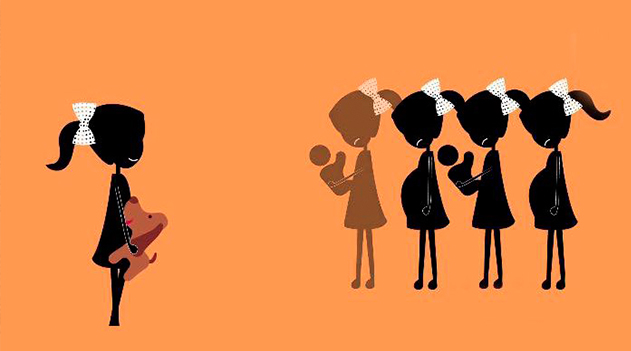The development and health of girls and adolescents run up against a thick wall of prejudice and ignorance.
It is enough to go to the official website of the United Nations Population Fund, UNFPA, to check the situation of children and adolescents in the countries of the world. Given that for our immediate interest we are focusing on Latin America and the Caribbean, we can see that, according to this UN agency, in our countries “one of the elements that has a significant impact on the situation of vulnerability of adolescents is unplanned pregnancy. The region has the second highest rate of teenage pregnancy in the world and it is estimated that almost 18% of all births are to women under 20 years of age”.
As an additional fact, and closely related to this birth rate among girls and adolescents, he adds: “Maternal mortality in Latin America and the Caribbean is among the three leading causes of death in adolescents between 15 and 19 years of age. In adolescents under the age of 15, the risk of dying from pregnancy-related causes is up to three times higher than in women over the age of 20. In Latin America, the annual number of unsafe abortions among adolescents aged 15-19 is believed to be as high as 670,000”.
Our nations are grouped among those belonging to the third and fourth worlds. Even if we pretend to label them as “developing”, the reality is different in most of them. We find ourselves, therefore, in a constant struggle to establish the foundations and institutional demarcation of functional democracies, but reality shows us how political and economic systems and strong pressure from the first world condition us to follow a course of action based on the convenience of sectors alien to the interest of our peoples, betraying the founding values of our constitutional texts and marginalising the weakest segments of society.
The increase in poverty and the lack of opportunities for the poorest population has an enormous impact on the most vulnerable groups: children and adolescents. Among these, the charge on girls and adolescents is even greater. Subject to an environment of threat and structural violence, they also constitute the group most at risk of sexual and psychological abuse, placed by tradition and custom in a relationship of dependence and submission within a predominantly patriarchal and macho social framework. Hence, sexual abuse, rape and subjection to tasks that prevent them from accessing education and basic rights condemn them to a future fraught with danger and deprivation.
One of the most heinous crimes against children is sexual abuse; a common practice that crosses all levels of society, it is carefully hidden within the walls of homes as an incomprehensible “matter of honour”, left unreported and kept under a cloak of silence. Although the threat of sexual abuse is present in any of the spaces where children and adolescents develop their activities, the intimacy of the home, together with the usual secrecy that protects it, constitutes one of the greatest obstacles to safety and psychological equilibrium, indispensable factors for the healthy development of this important segment of our communities.
The concept of home is often overstated. They are rife with abuse.
www.carolinavasquezaraya.com
elquintopatio@gmail.com
@carvasar












